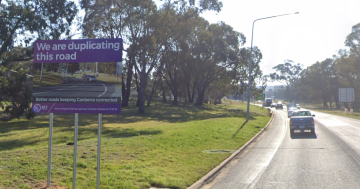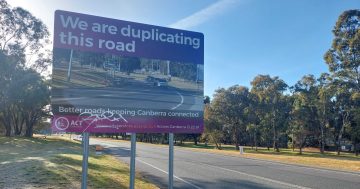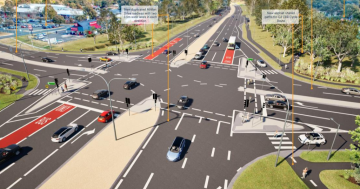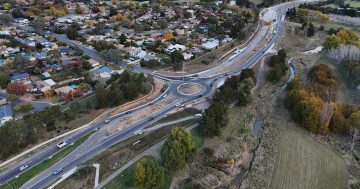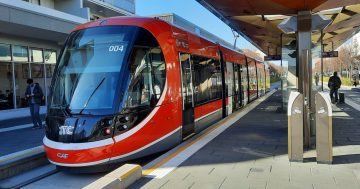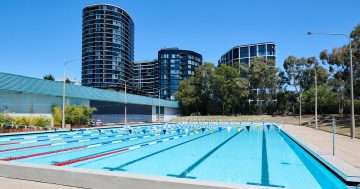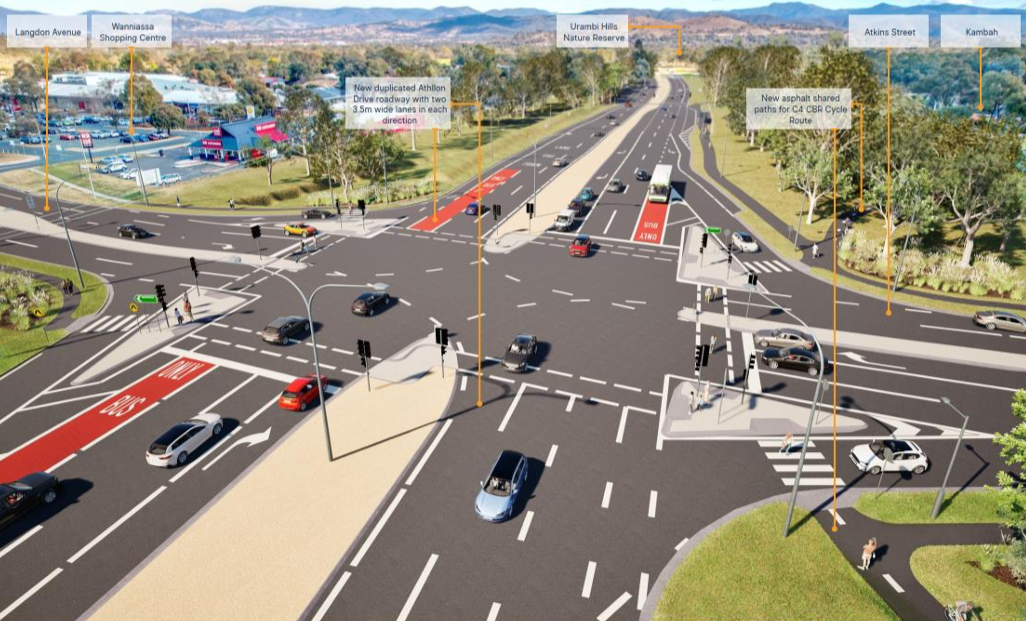
The artist’s impressions of the Atllhon Drive duplication don’t appear to leave much space for light rail. Image: ACT Government.
The ACT Government has been told it’s making a costly mistake by not allowing enough space for light rail in its long-awaited duplication of Athllon Drive in Tuggeranong.
The $98.55 million project, first promised in 2016, will add an extra lane in each direction along the 2.4 km stretch between Sulwood Drive and Drakeford Drive, along with new bus stops and cycle paths. The ACT and Federal governments are splitting the cost 50-50.
Athllon Drive currently carries more than 14,000 vehicles a day – or over 2000 an hour in peak times – including B-double trucks and two Rapid bus routes.
But MLA for Murrumbidgee Fiona Carrick complained the development application (DA), which opened for public feedback this week, “does not reserve space down the middle of Athllon Drive” for the future Woden-to-Tuggeranong light rail.
“This raises serious questions about how light rail will be implemented in the future, and whether costly retrofitting will be required to accommodate it,” she said.
The DA documents repeatedly state the design “does not preclude future light rail along Athllon Drive”. They also describe the road as the “Inter-Town Public Transport Route and … the proposed alignment for the future extension of light rail to Tuggeranong”.
However, Ms Carrick says the rendered images released tell a different story, showing a central median strip that is too narrow to fit tracks.
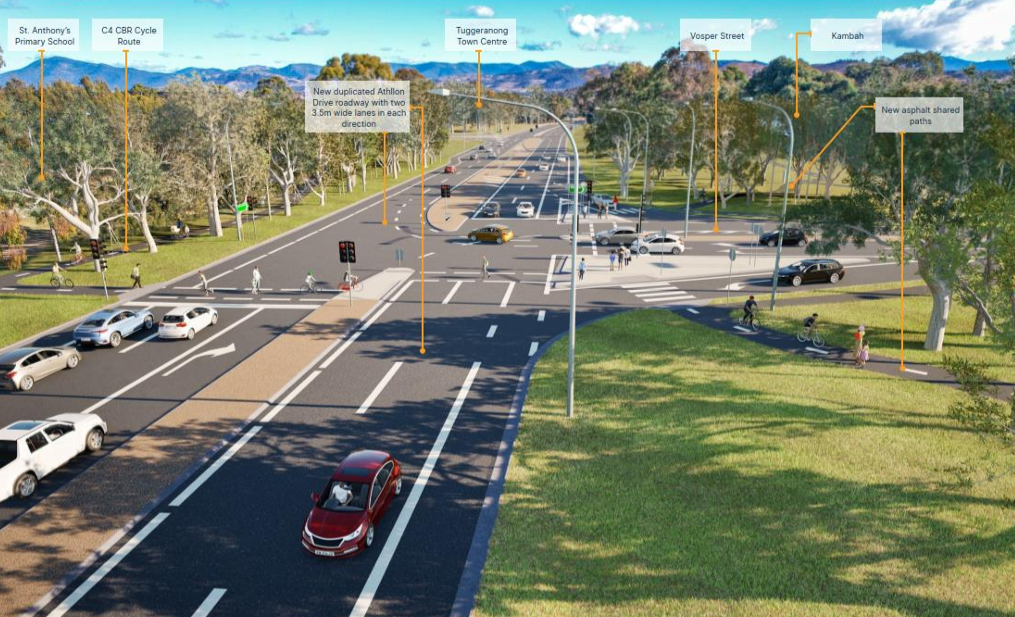
Artist impression of the Vosper Street intersection, looking south towards the Tuggeranong Town Centre. Image: ACT Government.
The concern also surfaced in May 2024 during a five-day community engagement period. While the government stated that feedback was “generally supportive” of duplication, residents raised concerns about traffic flow, additional signals, pedestrian safety, and the risk of light rail being compromised.
“There is a preference for alternative pedestrian safety measures like underpasses and overpasses and that this project does not preclude future light rail along the corridor,” the Development Outcomes Report noted.
The government responded that the duplication “does not preclude the future light rail connection” but argued the details and timing of that project remain uncertain.
“As the detail and timing of these future requirements are not currently understood, and as they have not been investigated, they were unable to be included in this design.”
Ms Carrick says that the approach risks leaving taxpayers to pick up the bill later.
“An alternative option – running the rails along the side of the road – would introduce extra traffic signals at intersections, which is not a desirable outcome for commuters or residents,” she said.
“I am calling on the ACT Government to be transparent about its plans for the light rail alignment between Woden and Tuggeranong.
“If the government is committed to delivering light rail to Tuggeranong along Athllon Drive, then the work currently planned … should be future-proofed by including space for the light rail alignment, to avoid the cost of having to reconfigure the road twice.”
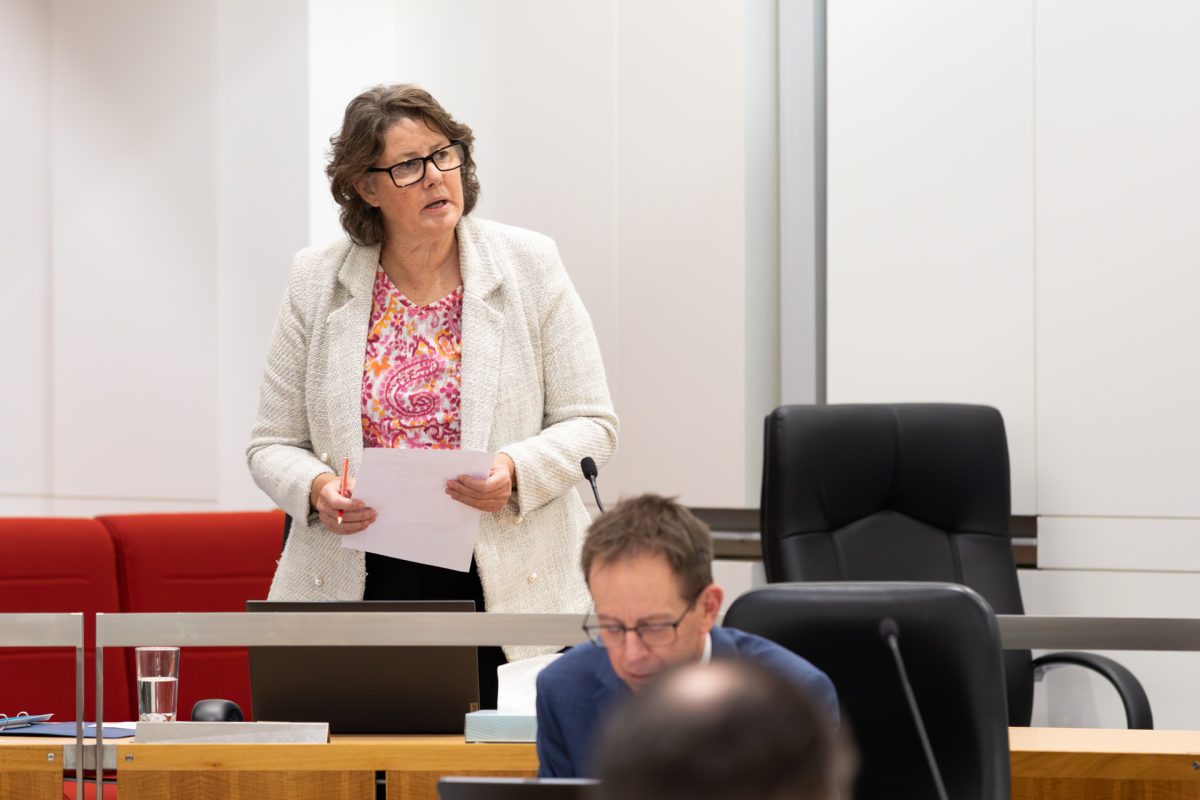
MLA for Murrumbidgee Fiona Carrick wants the government to be “transparent about its plans for the light rail alignment between Woden and Tuggeranong”. Photo: Michelle Kroll.
In response, a government spokesperson said the current focus remains on delivering Stage 2 of light rail to Woden, with future extensions to be considered “in due course”.
“The current master plan anticipates a long-term vision for an east-west corridor connecting Belconnen, Majura Park and the Canberra Airport, in addition to the vision to extend the north-south Light Rail line from Woden to Tuggeranong,” they said.
“As with all future stages of light rail beyond Stage 2, planning for light rail from Woden to Tuggeranong is currently not progressed. Given this, it is not feasible to undertake any preparatory work as part of the Athllon Drive duplication project.”
The government again stressed that the duplication “has been designed so that it can accommodate light rail network connection in the future”.
A construction tender is expected in late 2025, with works to take two to three years, pending “planning approvals and procurement activities”.












